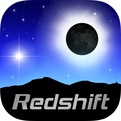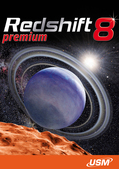Spirals eat dwarfs
Galactic tendrils shed light on evolution of spiral galaxies
 © D. Martínez-Delgado (MPIA)
|
Stellar streams around the galaxy M 63: remnants of a satellite galaxy that M 63 has swallowed. The central part is an ordinary positive image; in the outer regions, the negative of the image is shown. In this way, the faint structures that are the target of this survey are more readily discerned. This galaxy's distance from Earth is around 30 million light-years. The new survey has, for the first time, shown the presence of such tell-tale traces of spiral galaxies swallowing smaller satellites for galaxies more distant than our own “Local Group” of galaxies.
When a spiral galaxy is approached by a much smaller companion, such as a dwarf galaxy, the larger galaxy's uneven gravitational pull severely distorts the smaller star system. Over the course of a few billions of years, tendril-like structures develop that can be detected by sensitive observation. In one typical outcome, the smaller galaxy is transformed into an elongated “tidal stream” consisting of stars that, over the course of additional billions of years, will join the galaxy's regular stellar inventory through a process of complete assimilation. The study shows that major tidal streams with masses between 1 and 5 percent of the galaxy's total mass are quite common in spiral galaxies.
Detailed simulations depicting the evolution of galaxies predict both tidal streams and a number of other distinct features that indicate mergers, such as giant debris clouds or jet-like features emerging from galactic discs. Interestingly, all these various features are indeed seen in the new observations – impressive evidence that current models of galaxy evolution are indeed on the right track.
The ultra-deep images obtained by Delgado and his colleagues open the door to a new round of systematic galactic interaction studies. Next, with a more complete survey that is currently in progress, the researchers intend to subject the current models to more quantitative tests, checking whether current simulations make the correct predictions for the relative frequency of the different morphological features.
Remarkably, these cutting-edge results were obtained with the telescopes of ambitious amateur astronomers: For their observations, the researchers used telescopes with apertures between 10 and 50 cm, equipped with commercially available CCD cameras. The telescopes are robotic (that is, they can be controlled remotely), and are located at two private observatories in the US and one in Australia. The results attest to the power of systematic work that is possible even with smaller instruments: While larger telescopes have the undeniable edge in detecting very distant, but comparatively bright star systems such as active galaxies, this survey provides some of the deepest insight yet when it comes to detecting ordinary galaxies that are similar to our own cosmic home, the Milky Way.
Source: MPIA
Spirals eat dwarfs
Galactic tendrils shed light on evolution of spiral galaxies
 © D. Martínez-Delgado (MPIA)
|
Stellar streams around the galaxy M 63: remnants of a satellite galaxy that M 63 has swallowed. The central part is an ordinary positive image; in the outer regions, the negative of the image is shown. In this way, the faint structures that are the target of this survey are more readily discerned. This galaxy's distance from Earth is around 30 million light-years. The new survey has, for the first time, shown the presence of such tell-tale traces of spiral galaxies swallowing smaller satellites for galaxies more distant than our own “Local Group” of galaxies.
When a spiral galaxy is approached by a much smaller companion, such as a dwarf galaxy, the larger galaxy's uneven gravitational pull severely distorts the smaller star system. Over the course of a few billions of years, tendril-like structures develop that can be detected by sensitive observation. In one typical outcome, the smaller galaxy is transformed into an elongated “tidal stream” consisting of stars that, over the course of additional billions of years, will join the galaxy's regular stellar inventory through a process of complete assimilation. The study shows that major tidal streams with masses between 1 and 5 percent of the galaxy's total mass are quite common in spiral galaxies.
Detailed simulations depicting the evolution of galaxies predict both tidal streams and a number of other distinct features that indicate mergers, such as giant debris clouds or jet-like features emerging from galactic discs. Interestingly, all these various features are indeed seen in the new observations – impressive evidence that current models of galaxy evolution are indeed on the right track.
The ultra-deep images obtained by Delgado and his colleagues open the door to a new round of systematic galactic interaction studies. Next, with a more complete survey that is currently in progress, the researchers intend to subject the current models to more quantitative tests, checking whether current simulations make the correct predictions for the relative frequency of the different morphological features.
Remarkably, these cutting-edge results were obtained with the telescopes of ambitious amateur astronomers: For their observations, the researchers used telescopes with apertures between 10 and 50 cm, equipped with commercially available CCD cameras. The telescopes are robotic (that is, they can be controlled remotely), and are located at two private observatories in the US and one in Australia. The results attest to the power of systematic work that is possible even with smaller instruments: While larger telescopes have the undeniable edge in detecting very distant, but comparatively bright star systems such as active galaxies, this survey provides some of the deepest insight yet when it comes to detecting ordinary galaxies that are similar to our own cosmic home, the Milky Way.
Source: MPIA















